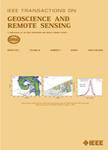版权所有:内蒙古大学图书馆 技术提供:维普资讯• 智图
内蒙古自治区呼和浩特市赛罕区大学西街235号 邮编: 010021

作者机构:Xidian Univ Sch Telecommun Engn State Key Lab Integrated Serv Networks Xian Peoples R China Chinese Acad Sci Natl Space Sci Ctr Beijing 100190 Peoples R China Chinese Acad Sci Natl Space Sci Ctr Key Lab Elect & Informat Technol Space Syst Beijing 100190 Peoples R China Univ Grenoble Alpes Inria CNRS Grenoble INLJK F-38000 Grenoble France
出 版 物:《IEEE TRANSACTIONS ON GEOSCIENCE AND REMOTE SENSING》 (IEEE Trans Geosci Remote Sens)
年 卷 期:2025年第63卷
核心收录:
学科分类:0808[工学-电气工程] 1002[医学-临床医学] 08[工学] 0708[理学-地球物理学] 0816[工学-测绘科学与技术]
基 金:National Natural Science Foundation of China [62401434, 62371359] China Postdoctoral Science Foundation [2023M732742] Natural Science Basic Research Plan in Shaanxi Province of China [2024JC-YBQN-0641] Guangdong Basic and Applied Basic Research Foundation [2023A1515110504] Postdoctoral Science Foundation of Shaanxi Province [2023BSHYDZZ97] Climbing Program of National Space Science Center [E3PD40013S] Fundamental Research Funds for the Central Universities [XJSJ23086] Youth Innovation Team of Shaanxi Universities
主 题:Transformers Feature extraction Mars Minerals Contrastive learning Hyperspectral imaging Convolutional neural networks Training Earth Data mining Graph contrastive learning information-enhanced attention lightweight Mars exploration
摘 要:Hyperspectral image (HSI) classification has been extensively studied in the context of Earth observation. However, its application in Mars exploration remains limited. Although convolutional neural networks (CNNs) have proven effective in HSI processing, their local receptive fields hinder their ability to capture long-range features. Transformers excel in global modeling and perform well in HSI classification (HSIC), but they often neglect the effective representation of local spectral and spatial features and tend to be more complex. To address these challenges, we propose a mixed CNN-transformer network for Mars HSI classification with graph contrastive learning to enhance classification performance. Specifically, we introduce an information-enhanced attention module (IEAM) designed to aggregate attention features from multiple perspectives. Additionally, we develop a lightweight dual-branch CNN-transformer (LDCT) network that efficiently extracts both local and global spectral-spatial features with lower complexity. To improve the discrimination of inter-class features, we apply graph contrastive learning to the topological structure of labeled samples. Furthermore, we annotated three Mars HSI datasets, referred to as HyMars, to validate the effectiveness of our proposed mixed CNN-transformer network for Mars HSIC with graph contrastive learning (MCTGCL). Comprehensive experimental results across different amounts of labeled samples consistently demonstrate the superiority of the method.